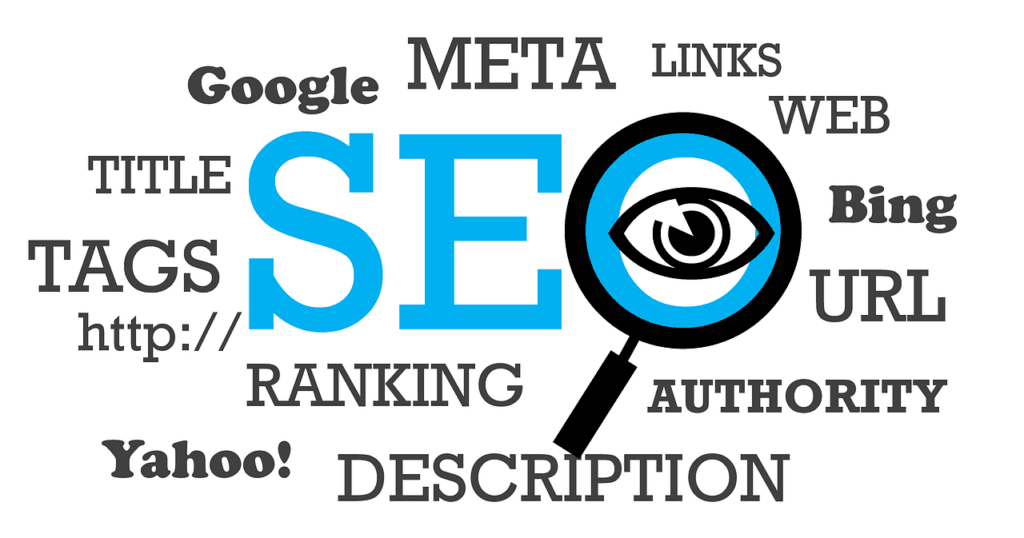This Article has been revised, edited and added to, by Poulomi Chakraborty.
- The Importance of Transparent SEO Reporting
- Starting with the Basics: Key Metrics for Immediate Impact
- Delving Deeper: Advanced Metrics for Comprehensive Insights
- Reporting SEO ROI in Monetary Terms
- Segmentation for Precision: Reporting Based on User Demographics and Behavior
- The Power of Visualization: Making SEO Reports Resonate
- Contextualizing Data: Benchmarking Against Competitors
- Continuous Feedback: Adjusting Reports Based on Stakeholder Input
- Tools and Technologies: Elevating SEO Reporting Efficiency and Impact
- Tailoring Reports for Different Stakeholders
- Storytelling in SEO Reporting: Narrating a Compelling Growth Tale
- Regular Updates vs. Comprehensive Quarterly Reports
- Seeking External Validation: Incorporating Third-Party SEO Audits
- Incorporating Stakeholder Feedback in Future Strategies
- Ensuring Transparency: Addressing Setbacks and Failures
- Conclusion: The Power of Effective SEO Reporting in Stakeholder Engagement
In the evolving world of startups, every investment—whether time, money, or resources—demands a clear ROI. SEO, being both art and science, often finds itself under the scrutiny of stakeholders looking for tangible results. Therefore, effectively reporting SEO ROI is paramount to ensure continued investment and stakeholder confidence. This article delves into strategies to communicate SEO returns convincingly to stakeholders.
The Importance of Transparent SEO Reporting
Before diving into the strategies, it’s essential to understand why transparent and comprehensive SEO reporting is crucial.
Elevating Stakeholder Confidence
Stakeholders, whether investors, board members, or senior management, invest in strategies they believe in. Clear reporting showcases the effectiveness of SEO efforts, fostering continued support.
Guiding Future Investments
Effective reporting doesn’t just highlight successes; it can also spotlight areas needing improvement or further investment. This proactive approach ensures that the startup remains agile and responsive.
Establishing SEO as a Core Strategy
For startups to prioritize and integrate SEO into their broader marketing strategy, stakeholders need to see its value. Detailed and positive ROI reports can cement SEO’s position in the startup’s long-term growth plan.
Starting with the Basics: Key Metrics for Immediate Impact

Before diving deep into advanced metrics, it’s often helpful to begin with familiar and easily understood metrics that immediately resonate with stakeholders.
Traffic Growth
One of the most direct indicators of SEO success is the growth in organic traffic.
Why Traffic Growth Matters:
- Direct Impact: A rise in organic visitors indicates successful keyword rankings and increased visibility.
- Future Potential: Consistent traffic growth can hint at the startup’s growing authority and reputation.
Conversion Rates
While traffic is good, conversions are better. Whether it’s sales, sign-ups, or another desired action, conversion rates directly correlate to ROI.
Conversion Rate Insights:
- Effectiveness: A high conversion rate indicates that the organic traffic is targeted and the on-site experience is optimized.
- Revenue Impact: For e-commerce startups or those with direct online sales, conversion rates can be directly tied to revenue figures, offering a clear ROI picture.
Engagement Metrics
Understanding how users interact with the site provides insights into content relevance and user experience.
Key Engagement Metrics:
- Average Session Duration: Reflects the time users spend on the site, often indicating content relevance.
- Bounce Rate: A measure of users leaving after viewing just one page, which can highlight potential issues with content or user experience.
Delving Deeper: Advanced Metrics for Comprehensive Insights
While basic metrics provide an immediate understanding of SEO ROI, diving deeper into advanced metrics can offer a holistic view, addressing potential stakeholder concerns or queries.
Keyword Rankings
While traffic is an outcome, keyword rankings are a significant driver behind it. Monitoring the startup’s position in SERPs (Search Engine Results Pages) for targeted keywords offers direct ROI insights.
Keyword Ranking Insights:
- Competitive Positioning: Understand where the startup stands concerning competitors for high-value keywords.
- Opportunity Spotting: Identifying high-performing keywords can guide content and backlinking strategies for further growth.
Backlink Profile Growth
Backlinks act as endorsements from other sites. A robust backlink profile not only boosts rankings but also drives referral traffic.
Backlink Metrics to Monitor:
- Referring Domains: It’s not just about the number of backlinks but also where they’re coming from. A diverse set of high-authority referring domains can significantly impact SEO ROI.
- Anchor Text Profile: Monitoring the anchor texts of incoming links ensures a natural and high-quality backlink profile.
User Behavior Flow
Going beyond standard engagement metrics, understanding the paths users take through the site can offer deeper insights into their journey and behavior.
Insights from User Behavior Flow:
- Content Effectiveness: Identifying high-exit pages or content can inform refinements.
- Funnel Analysis: Observing how users move through conversion funnels can guide optimizations, boosting conversion rates and ROI.
Reporting SEO ROI in Monetary Terms
While metrics like traffic growth or engagement rates are vital, stakeholders often resonate best with monetary values. Translating SEO efforts into financial figures can amplify the impact of the report.
Estimating Organic Traffic Value
Quantifying the value of organic traffic involves assessing how much it would cost to acquire the same traffic through paid channels.
Calculating Organic Traffic Value:
- Identify High-Performing Keywords: Use tools like Google Analytics to spot keywords driving significant organic traffic.
- Determine CPC (Cost Per Click) for Keywords: Leveraging platforms like Google Ads can provide average CPC values for these keywords.
- Calculate Traffic Value: Multiply the monthly traffic volume from each keyword by its respective CPC.
Revenue from Conversions
Directly tying SEO efforts to revenue can be a potent reporting strategy, especially for e-commerce startups.
Steps to Report Revenue from SEO:
- Track Conversions: Ensure proper conversion tracking setup in platforms like Google Analytics.
- Assign Monetary Value: Determine the average value of each conversion type.
- Calculate SEO-Driven Revenue: Multiply conversions from organic traffic by their respective monetary values.
Segmentation for Precision: Reporting Based on User Demographics and Behavior

To provide a comprehensive view of SEO ROI, segmenting data based on user demographics or behavior can offer nuanced insights, addressing specific stakeholder concerns or interests.
Geographic Segmentation
Breaking down SEO performance based on user location can inform local SEO strategies or highlight potential new markets.
Geographic Reporting Insights:
- Local SEO Impact: For startups focusing on specific regions, city-wise or country-wise data can provide direct ROI feedback.
- Emerging Markets: Spotting unexpected traffic or conversion surges from specific locations can guide market expansion strategies.
Device-based Segmentation
With users accessing websites from a myriad of devices, understanding SEO performance across these can inform optimizations.
Device Segmentation Metrics:
- Mobile vs. Desktop Performance: Comparing metrics like traffic, engagement, or conversions between mobile and desktop can offer UX or content insights.
- Optimization Priorities: If a significant chunk of high-converting traffic comes from a specific device type, ensuring a seamless experience for these users becomes paramount.
New vs. Returning Users
Distinguishing between new and returning users can offer insights into acquisition and retention, both vital for startups.
Insights from User Type Segmentation:
- Acquisition Success: A steady influx of new users indicates successful outreach and visibility efforts.
- Retention Strategies: A high percentage of returning users hints at effective engagement or loyalty strategies, influencing long-term ROI.
The Power of Visualization: Making SEO Reports Resonate
Data, while valuable, can often be overwhelming. Visualizing this data ensures that stakeholders can quickly grasp the insights and implications, making the report more impactful.
Dashboards and Overview Panels
Creating a centralized dashboard with key metrics provides stakeholders with a quick snapshot of SEO performance.
Dashboard Essentials:
- Traffic Trends: Graphical representation of traffic growth over time.
- Top Performing Keywords: A list or chart showcasing keywords driving the most traffic or conversions.
- Conversion Overview: Pie charts or bar graphs illustrating conversion types and rates.
Heatmaps
Heatmaps offer visual insights into user behavior on specific pages, highlighting areas of interest or potential issues.
Heatmap Insights:
- Engagement Hotspots: Areas where users frequently click or hover, indicating content or elements of interest.
- Potential UX Issues: Sections of the page that users consistently avoid might hint at UX challenges or irrelevant content.
Interactive Reports
For stakeholders keen on diving deep, interactive reports allow them to explore data at their own pace, drawing their own conclusions.
Components of Interactive Reports:
- Drill-Down Capabilities: Let stakeholders delve into specific metrics, such as traffic sources or keyword performances.
- Custom Date Ranges: Allow stakeholders to compare data across different periods, observing trends or seasonal variations.
Contextualizing Data: Benchmarking Against Competitors
While standalone metrics provide valuable insights, contextualizing these numbers by benchmarking against competitors can offer a clearer picture of the startup‘s standing in the market.
Competitor Traffic Comparison
Understanding how the startup’s traffic stacks up against competitors can provide insights into market share and growth potential.
Insights from Traffic Benchmarks:
- Market Leadership: If the startup drives significantly more organic traffic than competitors, it indicates market leadership or superior SEO strategies.
- Growth Opportunities: Identifying competitors with higher traffic can guide content or backlinking strategies, aiming to capture a larger audience share.
Backlink Profile Benchmarking
Comparing the startup’s backlink profile against competitors can highlight potential link-building opportunities or strategies.
Backlink Benchmark Insights:
- Link-Building Strategies: If a competitor has a significantly robust backlink profile, analyzing their strategies can offer insights.
- Referral Traffic Potential: Identifying high-authority sites linking to competitors but not the startup can guide outreach efforts.
Keyword Gap Analysis
Spotting keywords that competitors rank for, but the startup doesn’t, can inform content creation or optimization efforts.
Insights from Keyword Gap Analysis:
- Content Opportunities: Discovering high-volume keywords that competitors target can guide the startup’s content strategy.
- Strategic Adjustments: If competitors consistently outperform the startup for specific keyword categories, it might indicate a need for strategic SEO refinements.
Continuous Feedback: Adjusting Reports Based on Stakeholder Input

Finally, ensuring that SEO reports are aligned with stakeholder needs and preferences is crucial. Soliciting feedback post-reporting can guide refinements, ensuring each report is more impactful than the last.
Periodic Feedback Surveys
After presenting reports, circulate feedback surveys to stakeholders, capturing their insights and suggestions.
Feedback Survey Components:
- Clarity and Comprehensibility: Ask stakeholders if they found the report easy to understand and the data clear.
- Relevance of Metrics: Ensure that the metrics and insights presented resonate with stakeholder priorities.
- Suggestions for Improvements: Capture any feedback on additional data points, visualization methods, or narrative styles that stakeholders would like to see.
Iterative Reporting Enhancements
Based on the feedback received, continuously refine the reporting format, content, and visualization methods, ensuring that each report offers maximum value and impact.

Related: Check out our free SEO suite

Tools and Technologies: Elevating SEO Reporting Efficiency and Impact
In today’s digital age, a plethora of tools and technologies can streamline the SEO reporting process, offering real-time data, visualization capabilities, and interactive insights. Integrating these tools can not only enhance report quality but also ensure efficient and timely reporting.
Analytics Platforms for Data Gathering
Accurate and comprehensive data is the foundation of impactful SEO reporting. Several analytics platforms can provide a wealth of SEO-related data.
Essential Analytics Tools:
- Google Analytics: An industry-standard tool, Google Analytics offers insights into traffic sources, user behavior, conversion rates, and more.
- SEMrush: This comprehensive SEO tool provides keyword rankings, backlink profiles, and competitor data, among other insights.
- Ahrefs: Known for its robust backlink database, Ahrefs also offers keyword, content, and competitor analytics.
Visualization Tools for Data Representation
Converting raw data into comprehensible visuals can significantly elevate report impact, allowing stakeholders to grasp insights quickly.
Key Visualization Platforms:
- Tableau: This platform allows for intricate data visualizations, from bar graphs to heat maps, offering interactive capabilities.
- Google Data Studio: Integrating seamlessly with Google Analytics, this tool allows for customized and interactive dashboards and reports.
- Microsoft Power BI: Another powerful visualization tool, Power BI can handle vast data sets, offering a range of visualization options.
Automated Reporting Solutions
For startups with consistent reporting needs, automating the process can save time and ensure timely stakeholder updates.
Automation Tools and Benefits:
- Databox: Integrating with multiple data sources, Databox can automate report generation, offering real-time dashboards.
- Consistency: Automated reports ensure stakeholders receive consistent updates, fostering transparency.
- Time Efficiency: Automation reduces manual effort, allowing the SEO team to focus on strategy and execution.
Tailoring Reports for Different Stakeholders

Not all stakeholders have the same priorities or depth of understanding concerning SEO. Tailoring reports to specific audiences can enhance relevance and impact.
Reports for Investors and Board Members
This group often seeks high-level insights, focusing on ROI and growth metrics.
Key Report Components:
- Traffic Growth Trends: Showcase long-term traffic growth, indicating increasing visibility.
- ROI Figures: Highlight revenue or conversion figures directly resulting from SEO efforts.
- Competitive Benchmarking: Offer a snapshot of the startup’s position concerning key competitors.
Reports for Marketing and Sales Teams
These teams might require more granular insights, focusing on specific campaigns or keyword performances.
Essential Data Points:
- Campaign Performance: Detail specific SEO campaigns, their results, and implications for broader marketing strategies.
- Keyword Insights: Provide data on high-performing keywords, offering insights for content creation or sales pitches.
- Conversion Funnels: Detail how users move through conversion paths, informing marketing and sales strategies.
Reports for Product and Development Teams
Offering insights into user behavior or feedback, these reports can guide product enhancements or website optimizations.
Report Highlights:
- User Behavior Flow: Showcase paths users take, highlighting potential product interests or website UX challenges.
- Feedback and Reviews: Present any user feedback or reviews related to product features or website functionalities.
- Technical SEO Insights: Offer data on site speed, mobile optimizations, or crawl issues, guiding development efforts.
Storytelling in SEO Reporting: Narrating a Compelling Growth Tale
Beyond mere data and metrics, weaving a compelling story around the startup’s SEO journey can resonate deeply with stakeholders, ensuring they’re engaged and invested.
Setting the Stage with Context
Begin the report by painting a clear picture of the startup’s SEO landscape at the onset.
Contextual Elements:
- Initial Challenges: Highlight the SEO hurdles faced, be it low visibility, poor rankings, or technical issues.
- Objectives and Goals: Clearly outline the aims of the SEO strategy, providing a roadmap for the narrative.
The Climax: Overcoming Obstacles
Detail the strategies employed and the challenges encountered during the execution, showcasing the startup’s agility and commitment.
Climax Components:
- Strategic Shifts: Highlight any significant changes in SEO strategies, whether in response to algorithm updates or competitive pressures.
- Innovations and Experiments: Detail any innovative tactics employed or A/B tests run, providing a dynamic picture of the startup’s SEO journey.
The Resolution: Celebrating Successes
End on a high note, showcasing the tangible results of the startup’s efforts, and setting the stage for future growth.
Success Story Elements:
- Achieved Milestones: Celebrate specific achievements, be it ranking for high-value keywords, significant backlink acquisitions, or surpassing traffic goals.
- Future Roadmap: Offer a glimpse into future strategies or goals, ensuring stakeholders remain engaged and supportive.
Regular Updates vs. Comprehensive Quarterly Reports
Determining the frequency and depth of SEO reporting can influence its impact and relevance. Startups can opt for regular updates, comprehensive quarterly reports, or a combination of both based on stakeholder preferences.
The Merits of Regular Updates
Providing stakeholders with weekly or monthly updates can foster transparency and showcase consistent progress.
Benefits of Frequent Updates:
- Real-Time Insights: Stakeholders stay informed about the startup’s immediate SEO performance, allowing for agile decision-making.
- Spotting Trends: Regular data offers the chance to observe emerging trends or shifts, guiding proactive strategies.
The Depth of Quarterly Reports
A comprehensive quarterly report dives deep, offering nuanced insights and a holistic view of the startup’s SEO journey.
Components of Quarterly Reports:
- Comparative Analysis: Compare the quarter’s performance against previous ones, highlighting growth trends or strategic shifts.
- Campaign Deep Dives: Offer detailed insights into specific SEO campaigns run during the quarter, from strategies to results.
- Future Outlook: Provide a roadmap for the upcoming quarter, setting expectations and ensuring stakeholder alignment.
Seeking External Validation: Incorporating Third-Party SEO Audits
To further solidify stakeholder confidence, startups can opt for third-party SEO audits, offering an unbiased view of their efforts and performance.
The Value of Third-Party Audits
An external audit provides an objective assessment, free from internal biases or pressures.
Benefits of External SEO Audits:
- Credibility Boost: An endorsement or positive feedback from a reputed third-party can significantly elevate stakeholder trust.
- Spotting Overlooked Areas: External experts might identify potential improvements or issues that the internal team missed.
- Recommendations: Third-party audits often come with actionable recommendations, guiding future strategies or optimizations.
Incorporating Stakeholder Feedback in Future Strategies

An often overlooked yet essential part of the reporting process is integrating stakeholder feedback into future SEO strategies. This not only ensures stakeholder alignment but also elevates the effectiveness of SEO efforts.
Organizing Stakeholder Meetings Post-Reporting
After presenting the SEO report, arrange dedicated feedback sessions with different stakeholder groups.
Benefits of Post-Report Meetings:
- Clarifying Doubts: Address any queries or concerns stakeholders might have regarding the report or the data presented.
- Gathering Feedback: Actively seek suggestions or feedback, ensuring that future reports resonate even better with stakeholders.
Aligning SEO Goals with Stakeholder Priorities
Every stakeholder group might have different priorities or objectives. Aligning SEO goals with these can ensure continued support and synergy.
Steps for Goal Alignment:
- Identify Stakeholder Priorities: Understand the primary objectives or concerns of different stakeholder groups.
- Map SEO Goals: Based on the identified priorities, tailor SEO goals to align with them.
- Communicate Alignments: Clearly highlight these alignments in future reports, showcasing the startup’s commitment to stakeholder priorities.
Actioning Feedback for Continuous Improvement
Beyond merely gathering feedback, incorporating it into strategies or reporting styles is vital.
Incorporating Feedback Insights:
- Refined Reporting: Adjust the report format, visualization methods, or metrics based on stakeholder feedback.
- Strategic Tweaks: If stakeholders highlight specific concerns or areas of interest, tailor SEO strategies to address them.
- Continuous Feedback Loop: Ensure a system where stakeholder feedback is regularly sought and actioned, fostering a culture of continuous improvement.
Ensuring Transparency: Addressing Setbacks and Failures
While celebrating successes is essential, addressing setbacks or failures with transparency can bolster stakeholder trust and showcase the startup’s commitment to honesty.
Acknowledging Mistakes
Every startup faces challenges, and not every strategy guarantees success. Openly acknowledging mistakes or misjudgments can set the stage for constructive discussions.
Benefits of Transparency:
- Trust Building: Stakeholders appreciate honesty, and admitting mistakes can elevate their trust in the startup.
- Learning Opportunities: Discussing setbacks can offer valuable insights, guiding future strategies or optimizations.
Charting the Way Forward
While acknowledging mistakes, it’s equally vital to provide a clear roadmap for addressing them.
Steps for Future Planning:
- Root Cause Analysis: Understand the underlying reasons behind the setback or failure.
- Strategic Adjustments: Based on the analysis, outline the changes or tweaks to prevent similar issues in the future.
- Timeline and Milestones: Provide stakeholders with a clear plan, complete with timelines and milestones, ensuring accountability and setting expectations.
Conclusion: The Power of Effective SEO Reporting in Stakeholder Engagement
Proving the ROI of SEO efforts to stakeholders goes beyond mere numbers or metrics. It’s about weaving a compelling narrative, showcasing consistent growth, addressing concerns with transparency, and ensuring alignment with stakeholder priorities. By adopting the reporting strategies outlined in this article, startups can effectively communicate their SEO journey, fostering stakeholder trust, engagement, and continued support.
Read Next:
- SEO Keyword Research Checklist for Startups
- How to Use Seed Keywords to Expand Your Startup
- Creating a Keyword Research Workflow for Startup Success
- Keyword Research Tools Comparison: Which One is Right for Startups?
- Startup SEO Keyword Mistakes to Avoid: Common Pitfalls





















Comments are closed.